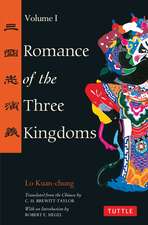A Brief History of Time: Recomandări cărți Ecommerce - Școala de vară GPeC 2019
Autor Stephen Hawkingen Limba Engleză Paperback – feb 1989
Published more than two decades ago to great critical acclaim and commercial success, A Brief History of Time has become a landmark volume in science writing. Stephen Hawking, one of the great minds of our time, explores such profound questions as: How did the universe begin—and what made its start possible? Does time always flow forward? Is the universe unending—or are there boundaries? Are there other dimensions in space? What will happen when it all ends?
Told in language we all can understand, A Brief History of Time plunges into the exotic realms of black holes and quarks, of antimatter and “arrows of time,” of the big bang and a bigger God—where the possibilities are wondrous and unexpected. With exciting images and profound imagination, Stephen Hawking brings us closer to the ultimate secrets at the very heart of creation.
| Toate formatele și edițiile | Preț | Express |
|---|---|---|
| Paperback (4) | 56.63 lei 3-5 săpt. | +6.26 lei 5-11 zile |
| Transworld Publishers Ltd – mai 2001 | 56.63 lei 3-5 săpt. | +6.26 lei 5-11 zile |
| Random House LLC US – feb 1989 | 56.82 lei 3-5 săpt. | +4.94 lei 5-11 zile |
| Transworld Publishers Ltd – 18 aug 2011 | 58.18 lei 24-30 zile | +20.49 lei 5-11 zile |
| Bantam Books – 31 aug 1998 | 99.83 lei 3-5 săpt. | +16.78 lei 5-11 zile |
| Hardback (1) | 183.25 lei 3-5 săpt. | |
| Bantam – 31 aug 1998 | 183.25 lei 3-5 săpt. |
Din seria Recomandări cărți Ecommerce - Școala de vară GPeC 2019
-
 Preț: 113.38 lei
Preț: 113.38 lei - 20%
 Preț: 369.29 lei
Preț: 369.29 lei -
 Preț: 229.27 lei
Preț: 229.27 lei - 17%
 Preț: 62.67 lei
Preț: 62.67 lei -
 Preț: 109.26 lei
Preț: 109.26 lei - 16%
 Preț: 69.29 lei
Preț: 69.29 lei - 24%
 Preț: 42.77 lei
Preț: 42.77 lei -
 Preț: 131.12 lei
Preț: 131.12 lei - 15%
 Preț: 81.71 lei
Preț: 81.71 lei - 20%
 Preț: 189.15 lei
Preț: 189.15 lei - 15%
 Preț: 81.82 lei
Preț: 81.82 lei - 15%
 Preț: 71.12 lei
Preț: 71.12 lei - 26%
 Preț: 78.94 lei
Preț: 78.94 lei - 20%
 Preț: 216.98 lei
Preț: 216.98 lei -
 Preț: 139.47 lei
Preț: 139.47 lei - 20%
 Preț: 298.80 lei
Preț: 298.80 lei - 14%
 Preț: 101.38 lei
Preț: 101.38 lei -
 Preț: 52.98 lei
Preț: 52.98 lei - 15%
 Preț: 103.82 lei
Preț: 103.82 lei - 16%
 Preț: 91.11 lei
Preț: 91.11 lei - 16%
 Preț: 69.70 lei
Preț: 69.70 lei -
 Preț: 168.64 lei
Preț: 168.64 lei -
 Preț: 162.45 lei
Preț: 162.45 lei - 26%
 Preț: 70.07 lei
Preț: 70.07 lei - 25%
 Preț: 42.45 lei
Preț: 42.45 lei -
 Preț: 77.51 lei
Preț: 77.51 lei - 13%
 Preț: 97.00 lei
Preț: 97.00 lei - 13%
 Preț: 524.84 lei
Preț: 524.84 lei -
 Preț: 59.97 lei
Preț: 59.97 lei - 20%
 Preț: 1902.51 lei
Preț: 1902.51 lei - 20%
 Preț: 368.90 lei
Preț: 368.90 lei -
 Preț: 395.89 lei
Preț: 395.89 lei -
 Preț: 53.00 lei
Preț: 53.00 lei
Preț: 56.82 lei
Nou
10.87€ • 11.31$ • 8.98£
Carte disponibilă
Livrare economică 24 martie-07 aprilie
Livrare express 08-14 martie pentru 14.93 lei
Specificații
ISBN-10: 0553173251
Pagini: 227
Ilustrații: HALFTONES THROUGHOUT
Dimensiuni: 103 x 175 x 20 mm
Greutate: 0.12 kg
Editura: Random House LLC US
Colecția Bantam Books
Seria Recomandări cărți Ecommerce - Școala de vară GPeC 2019
Notă biografică
Descriere
In the ten years since its publication in 1988, Stephen Hawking's classic work has become a landmark volume in scientific writing, with more than nine million copies in forty languages sold worldwide. That edition was on the cutting edge of what was then known about the origins and nature of the universe. But the intervening years have seen extraordinary advances in the technology of observing both the micro- and the macrocosmic worlds. These observations have confirmed many of Professor Hawking's theoretical predictions in the first edition of his book, including the recent discoveries of the Cosmic Background Explorer satellite (COBE), which probed back in time to within 300,000 years of the universe's beginning and revealed wrinkles in the fabric of space-time that he had projected. Eager to bring to his original text the new knowledge revealed by these observations, as well as his own recent research, Professor Hawking has prepared a new introduction to the book, written an entirely new chapter on wormholes and time travel, and updated the chapters throughout.
Recenzii
“Lively and provocative . . . Mr. Hawking clearly possesses a natural teacher’s gifts—easy, good-natured humor and an ability to illustrate highly complex propositions with analogies plucked from daily life.”—The New York Times
“Even as he sits helpless in his wheelchair, his mind seems to soar ever more brilliantly across the vastness of space and time to unlock the secrets of the universe.”—Time
“This book marries a child’s wonder to a genius’s intellect. We journey into Hawking’s universe while marvelling at his mind.”—The Sunday Times (London)
“A masterful summary of what physicists now think the world is made of and how it got that way.”—The Wall Street Journal
“Charming and lucid . . . [A book of] sunny brilliance.”—The New Yorker
Extras
OUR PICTURE OF
THE UNIVERSE
A well-known scientist (some say it was Bertrand Russell) once gave a public lecture on astronomy. He described how the earth orbits around the sun and how the sun, in turn, orbits around the center of a vast collection of stars called our galaxy. At the end of the lecture, a little old lady at the back of the room got up and said: “What you have told us is rubbish. The world is really a flat plate supported on the back of a giant tortoise.” The scientist gave a superior smile before replying, “What is the tortoise standing on?” “You’re very clever, young man, very clever,” said the old lady. “But it’s turtles all the way down!”
Most people would find the picture of our universe as an infinite tower of tortoises rather ridiculous, but why do we think we know better? What do we know about the universe, and how do we know it? Where did the universe come from, and where is it going? Did the universe have a beginning, and if so, what happened before then? What is the nature of time? Will it ever come to an end? Can we go back in time? Recent breakthroughs in physics, made possible in part by fantastic new technologies, suggest answers to some of these longstanding questions. Someday these answers may seem as obvious to us as the earth orbiting the sun–or perhaps as ridiculous as a tower of tortoises. Only time (whatever that may be) will tell.
As long ago as 340 B.C. the Greek philosopher Aristotle, in his book On the Heavens, was able to put forward two good arguments for believing that the earth was a round sphere rather than a flat plate. First, he realized that eclipses of the moon were caused by the earth coming between the sun and the moon. The earth’s shadow on the moon was always round, which would be true only if the earth was spherical. If the earth had been a flat disk, the shadow would have elongated and elliptical, unless the eclipse always occurred at a time when the sun was directly under the center of the disk. Second, the Greeks knew from their travels that the North Star appeared lower in the sky when viewed in the south than it did in more northerly regions. (Since the North Star lies over the North Pole, it appears to be directly above an observer at the North Pole, but to someone looking from the equator, it appears to lie just at the horizon. From the difference in the apparent position of the North Star in Egypt and Greece, Aristotle even quoted an estimate that the distance around the earth was 400,000 stadia. It is not known exactly what length a stadium was, but it may have been about 200 yards, which would make Aristotle’s estimate about twice the currently accepted figure. The Greeks even had a third argument that the earth must be round, for why else does one first see the sails of a ship coming over the horizon, and only later see the hull?
Aristotle thought the earth was stationary and that the sun, the moon, the planets, and the stars moved in circular orbits about the earth. He believed this because he felt, for mystical reasons, that the earth was the center of the universe, and that circular motion was the most perfect. This idea was elaborated by Ptolemy in the second century A.D. into a complete cosmological model. The earth stood at the center, surrounded by eight spheres that carried the moon, the sun, the stars, and the five planets known at the time, Mercury, Venus, Mars, Jupiter, and Saturn (Fig 1.1). The planets themselves moved on smaller circles attached to their respective spheres in order to account for their rather complicated observed paths in the sky. The outermost sphere carried the so-called fixed stars, which always stay in the same positions relative to each other but which rotate together across the sky. What lay beyond the last sphere was never made very clear, but it certainly was not part of mankind’s observable universe.
Ptolemy’s model provided a reasonably accurate system for predicting the positions of heavenly bodies in the sky. But in order to predict these positions correctly, Ptolemy had to make an assumption that the moon followed a path that sometimes brought it twice as close to the earth as at other times. And that meant that the moon ought sometimes to appear twice as big as at other times! Ptolemy recognized this flaw, but nevertheless his model was generally, although not universally, accepted. It was adopted by the Christian church as the picture of the universe that was in accordance with Scripture, for it had the great advantage that it left lots of room outside the sphere of fixed stars for heaven and hell.
A simpler model, however, was proposed in 1514 by a Polish priest, Nicholas Copernicus. (At first, perhaps for fear of being branded a heretic by his church, Copernicus circulated his model anonymously.) His idea was that the sun was stationary at the center and that the earth and the planets moved in circular orbits around the sun. Nearly a century passed before this idea was taken seriously. Then two astronomers–the German, Johannes Kepler, and the Italian, Galileo Galilei–started publicly to support the Copernican theory, despite the fact that the orbits it predicted did not quite match the ones observed. The death blow to the Aristotelian/Ptolemaic theory came in 1609. In that year, Galileo started observing the night sky with a telescope, which had just been invented. When he looked at the planet Jupiter, Galileo found that it was accompanied by several small satellites or moons that orbited around it. This implied that everything did not have to orbit directly around the earth, as Aristotle and Ptolemy had thought. (It was, of course, still possible to believe that the earth was stationary at the center of the universe and that the moons of Jupiter moved on extremely complicated paths around the earth, giving the appearance that they orbited Jupiter. However, Copernicus’s theory was much simpler.) At the same time, Johannes Kepler had modified Copernicus’s theory, suggesting that the planets moved not in circles but in ellipses (an ellipse is an elongated circle). The predictions now finally matched the observations.
As far as Kepler was concerned, elliptical orbits were merely an ad hoc hypothesis, and a rather repugnant one at that, because ellipses were clearly less perfect than circles. Having discovered almost by accident that elliptical orbits fit the observations well, he could not reconcile them with his idea that the planets were made to orbit the sun by magnetic forces. An explanation was provided only much later, in 1687, when Sir Isaac Newton published his Philosophiae Naturalis Principia Mathematica, probably the most important single work ever published in the physical sciences. In it Newton not only put forward a theory of how bodies move in space and time, but he also developed the complicated mathematics needed to analyze those motions. In addition, Newton postulated a law of universal gravitation according to which each body in the universe was attracted toward every other body by a force that was stronger the more massive the bodies and the closer they were to each other. It was this same force that caused objects to fall to the ground. (The story that Newton was inspired by an apple hitting his head is almost certainly apocryphal. All Newton himself ever said was that the idea of gravity came to him as he sat “in a contemplative mood” and “was occasioned by the fall of an apple.”) Newton went on to show that, according to his law, gravity causes the moon to move in an elliptical orbit around the earth and causes the earth and the planets to follow elliptical paths around the sun.
The Copernican model got rid of Ptolemy’s celestial spheres, and with them, the idea that the universe had a natural boundary. Since “fixed stars” did not appear to change their positions apart from a rotation across the sky caused by the earth spinning on its axis, it became natural to suppose that the fixed stars were objects like our sun but very much farther away.
Newton realized that, according to his theory of gravity, the stars should attract each other, so it seemed they could not remain essentially motionless. Would they not all fall together at some point? In a letter in 1691 to Richard Bentley, another leading thinker of his day, Newton argued that his would indeed happen if there were only a finite number of stars distributed over a finite region of space. But he reasoned that if, on the other hand, there were an infinite number of stars, distributed more or less uniformly over infinite space, this would not happen, because there would not be any central point for them to fall to.
This argument is an instance of the pitfalls that you can encounter in talking about infinity. In an infinite universe, every point can be regarded as the center, because every point has an infinite number of stars on each side of it. The correct approach, it was realized only much later, is to consider the finite situation, in which the stars all fall in on each other, and then to ask how things change if one adds more stars roughly uniformly distributed outside this region. According to Newton’s law, the extra stars would make no difference at all to the original ones on average, so the stars would fall in just as fast. We can add as many stars as we like, but they will still always collapse in on themselves. We now know it is impossible to have an infinite static model of the universe in which gravity is always attractive.
It is an interesting reflection on the general climate of thought before the twentieth century that no one had suggested that the universe was expanding or contracting. It was generally accepted that either the universe had existed forever in an unchanging state, or that it had been created at a finite time in the past more or less as we observe it today. In part this may have been due to people’s tendency to believe in eternal truths, as well as the comfort they found in the thought that even though they may grow old and die, the universe is eternal and unchanging.
Even those who realized that Newton’s theory of gravity showed that the universe could not be static did not think to suggest that it might be expanding. Instead, they attempted to modify the theory by making the gravitational force repulsive at very large distances. This did not significantly affect their predictions of the motions of the planets, but it allowed an infinite distribution of stars to remain in equilibrium–with the attractive forces between nearby stars balanced by the repulsive forces from those that were farther away. However, we now believe such an equilibrium would be unstable: if the stars in some region got only slightly nearer each other, the attractive forces between them would become stronger and dominate over the repulsive forces so that the stars would continue to fall toward each other. On the other hand, if the stars got a bit farther away from each other, the repulsive forces would dominate and drive them farther apart.
Another objection to an infinite static universe is normally ascribed to the German philosopher Heinrich Olbers, who wrote about this theory in 1823. In fact, various contemporaries of Newton had raised the problem, and the Olbers article was not even the first to contain plausible arguments against it. It was, however, the first to be widely noted. The difficulty is that in an infinite static universe nearly every line of sight would end on the surface of a star. Thus one would expect that the whole sky would be as bright as the sun, even at night. Olbers’s counterargument was that the light from distant stars would be dimmed by absorption by intervening matter. However, if that happened the intervening matter would eventually heat up until it glowed as brightly as the stars. The only way of avoiding the conclusion that the whole of the night sky should be as bright as the surface of the sun would be to assume that the stars had not been shining forever but had turned on at some finite time in the past. In that case the absorbing matter might not have heated up yet or the light from distant stars might not yet have reached us. And that brings us to the question of what could have caused the stars to have turned on in the first place.
The beginning of the universe had, of course, been discussed long before this. According to a number of early cosmologies and the Jewish/Christian/Muslim tradition, the universe started at a finite, and not very distant, time in the past. One argument for such a beginning was the feeling that it was necessary to have “First Cause” to explain the existence of the universe. (Within the universe, you always explained one event as being caused by some earlier event, but the existence of the universe itself could be explained in this way only if it had some beginning.) Another argument was put forward by St. Augustine in his book The City of God. He pointed out that civilization is progressing and we remember who performed this deed or developed that technique. Thus man, and so also perhaps the universe, could not have been around all that long. St. Augustine accepted a date of about 5000 B.C. for the Creation of the universe according to the book of Genesis. (It is interesting that this is not so far from the end of the last Ice Age, about 10,000 B.C., which is when archaeologists tell us that civilization really began.)
Aristotle, and most of the other Greek philosophers, on the other hand, did not like the idea of a creation because it smacked too much of divine intervention. They believed, therefore, that the human race and the world around it had existed, and would exist, forever. The ancients had already considered the argument about progress described above, and answered it by saying that there had been periodic floods or other disasters that repeatedly set the human race right back to the beginning of civilization.
























